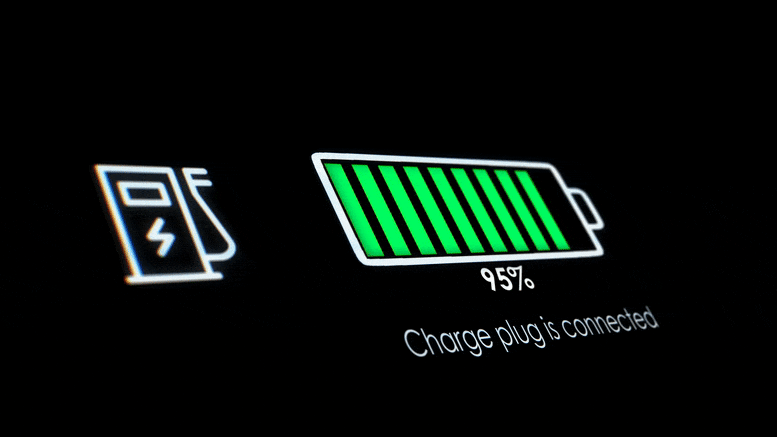A method to inhibit lithium plating in electric vehicle batteries has been discovered by a research team, potentially facilitating more rapid charging periods. By refining the microstructure of the graphite negative electrode, the tendency for lithium plating can be substantially lessened. This development may transform the efficacy, safety, and durability of electric vehicle batteries, rendering them a progressively appealing option for users.
A solution to restrict lithium plating in EV batteries has been identified, which offers the prospect of accelerated charging and extended battery lifespan, marking a considerable progression in the field of electric vehicles.
Dr. Xuekun Lu of Queen Mary University of London, in collaboration with a global research team from the UK and USA, has conducted a new study that discovered a method to curb lithium plating in electric vehicle batteries, potentially leading to swifter charging periods. The research is set to be published on August 24 in the scientific journal Nature Communications.
Understanding the Lithium Plating Phenomenon
Lithium plating is an occurrence that may take place in lithium-ion batteries during rapid charging. It transpires when lithium ions accumulate on the negative electrode’s surface rather than intercalating into it, forming a continuous metallic lithium layer. This growth can impair the battery, truncate its life, and provoke short circuits, which can result in fire and explosion.
The Proposed Solution
Dr. Xuekun Lu has detailed that significant reduction of lithium plating can be achieved by fine-tuning the microstructure of the graphite negative electrode. Composed of randomly arranged small particles, the graphite negative electrode’s particle and electrode morphology must be adjusted to obtain uniform reaction activity and decreased local lithium saturation. This adjustment is vital to restraining lithium plating and enhancing battery performance.
Credit: Xuekun Lu et al/Nature Communications provides a visual representation of lithium concentration during the charging of a graphite negative electrode.
Dr. Lu stated, “Our investigation has unveiled that the lithiation behavior of graphite particles fluctuates under specific conditions, influenced by factors such as their surface form, size, shape, and alignment. This greatly impacts lithium distribution and the tendency for lithium plating.” He further added, “With the support of an innovative 3D battery model, we are able to discern when and where lithium plating begins and its growth rate. This constitutes a noteworthy advance with considerable implications for electric vehicles’ future.”
Study’s Implications
The study furnishes fresh perspectives in devising sophisticated fast-charging procedures, enhancing the grasp of lithium redistribution within graphite particles while charging swiftly. This expertise could culminate in a proficient charging process, while diminishing the potential risks of lithium plating.
The research also discerned that refining the graphite electrode’s microstructure augments the battery’s energy density, thereby extending the travel range of electric vehicles on a single charge.
These revelations signify a major leap in electric vehicle battery technology. They could usher in more rapid charging, enhanced longevity, and augmented safety for electric vehicles, making them an increasingly viable choice for consumers.
Reference: “Multiscale Dynamics of Charging and Plating in Graphite Electrodes Coupling Operando Microscopy and Phase-field Modelling,” Nature Communications, 24 August 2023. DOI: 10.1038/s41467-023-40574-6.
Table of Contents
Frequently Asked Questions (FAQs) about lithium plating
What is the new technique discovered to prevent lithium plating in electric vehicle batteries?
The new technique involves optimizing the microstructure of the graphite negative electrode. By refining the particle and electrode morphology for uniform reaction activity and reduced local lithium saturation, the propensity for lithium plating is significantly mitigated. This can lead to faster charging times and an overall improvement in battery performance.
Who led the research on lithium plating suppression in electric vehicle batteries?
The research was led by Dr. Xuekun Lu from Queen Mary University of London, working in collaboration with an international team of researchers from the UK and USA.
What are the implications of suppressing lithium plating in electric vehicle batteries?
Suppressing lithium plating can result in enhanced charging efficiency, safety, and longevity of electric vehicle batteries. This means quicker charging times, a longer battery life, and increased energy density, allowing electric cars to travel further on a single charge. This breakthrough could have a significant impact on the future development of electric vehicles.
Where was the research published, and what was the title?
The research was published in the journal Nature Communications on August 24, 2023. The title of the paper is “Multiscale Dynamics of Charging and Plating in Graphite Electrodes Coupling Operando Microscopy and Phase-field Modelling.”
How does lithium plating affect lithium-ion batteries?
Lithium plating occurs when lithium ions build up on the surface of the battery’s negative electrode instead of integrating into it. This forms a layer of metallic lithium that continues to grow, which can damage the battery, shorten its lifespan, and cause short circuits that might lead to fire and explosion. Suppressing lithium plating is crucial for improving battery performance and safety.



4 comments
Great article but i didn’t understand all the technical details? Is this something that could be implemented soon, or just a laboratory finding for now?
finally some real advancements in battery tech, this could change everything in the auto industry… I hope the big manufacturers are paying attention.
Whats the time frame on this. Would love to buy an electric vehicle but the charging times are a big turnoff for me. If this solves the problem, Im all in.
This is some really exciting stuff!! Electric cars are the future and faster charging times just make them even more appealing. cant wait to see this tech in action.